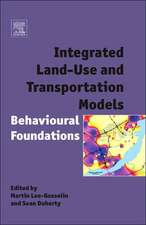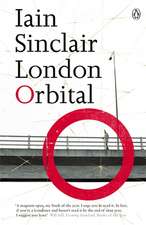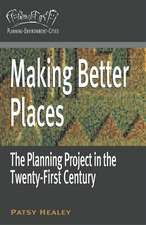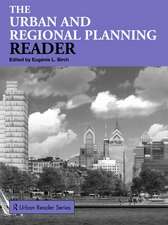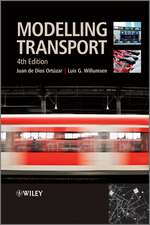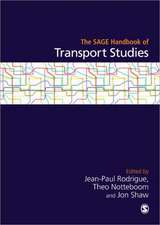A Planner's Encounter with Complexity: New Directions in Planning Theory
Autor Gert de Roo, Elisabete A. Silvaen Limba Engleză Paperback – 26 oct 2016
| Toate formatele și edițiile | Preț | Express |
|---|---|---|
| Paperback (1) | 386.77 lei 3-5 săpt. | +22.67 lei 5-11 zile |
| Taylor & Francis – 26 oct 2016 | 386.77 lei 3-5 săpt. | +22.67 lei 5-11 zile |
| Hardback (1) | 770.98 lei 6-8 săpt. | |
| Taylor & Francis – 28 aug 2010 | 770.98 lei 6-8 săpt. |
Preț: 386.77 lei
Nou
Puncte Express: 580
Preț estimativ în valută:
74.07€ • 76.32$ • 62.05£
74.07€ • 76.32$ • 62.05£
Carte disponibilă
Livrare economică 03-17 februarie
Livrare express 18-24 ianuarie pentru 32.66 lei
Preluare comenzi: 021 569.72.76
Specificații
ISBN-13: 9781138272408
ISBN-10: 113827240X
Pagini: 360
Dimensiuni: 156 x 234 x 23 mm
Greutate: 0.45 kg
Ediția:1
Editura: Taylor & Francis
Colecția Routledge
Seria New Directions in Planning Theory
Locul publicării:Oxford, United Kingdom
ISBN-10: 113827240X
Pagini: 360
Dimensiuni: 156 x 234 x 23 mm
Greutate: 0.45 kg
Ediția:1
Editura: Taylor & Francis
Colecția Routledge
Seria New Directions in Planning Theory
Locul publicării:Oxford, United Kingdom
Cuprins
Contents: Preface; Planning and complexity: an introduction, Gert de Roo; Being or becoming? That is the question! Confronting complexity with contemporary planning theory, Gert de Roo; Dealing with society's 'big messes', Jens-Peter Grunau and Walter L. Schönwandt; Complexity in spatial planning practice and theory: the case of Kiruna mining town, Kristina L. Nilsson; Complex systems, evolutionary planning?, Luca Bertolini; Complexity in city systems: understanding evolution and design, Michael Batty; Emergence, spatial order, transaction costs and planning, Chris Webster; Spatial planning processes: applying a dynamic complex systems perspective, Menno Huys and Marcel van Gils; The awakening of complexity in conceptualisations of space in planning, Janneke E. Hagens; Process and transient scenarios in collaborative planning: managing the time dimension, Adele Celino and Grazia Concilio; Complexity and cellular automaton: exploring its practical application, Elisabete A. Silva; Complexity and travel behaviour: modelling influence of social interactions on travellers' behaviour using a multi-agent simulation, Yos Sunitiyoso, Erel Avineri and Kiron Chatterjee; Complexity theory and transport planning: fractal traffic networks, Erel Avineri; Going beyond the metaphor of the machine: complexity and participatory ecological design, Joanne Tippett; Rethinking brownfields: discourses, networks and space-time, Nikos Karadimitriou, Joe Doak and Elisabete Cidre; Urban governance and social complexity, Joris van Wezemael; Waves of complexity: theory, models, and practice, Elisabete A. Silva; Index.
Notă biografică
Professor Gert de Roo, Faculty of Spatial Sciences University of Groningen, The Netherlands and Dr Elisabete A. Silva Department of Land Economy, University of Cambridge, UK
Recenzii
'The challenges of complexity to our understandings of and approaches to planning are increasingly hard to ignore. Complexity has moved beyond the heuristic to a cogent analysis of how people and places interact and is now exploring ways of conceiving, planning and governing space from spatial modelling to property rights. A Planner's Encounter with Complexity strikes a fine balance between an overview and contemporary research and is a must read for all those involved in place-making.' Phil Allmendinger, University of Cambridge, UK 'What is specifically interesting about A Planner's Encounter with Complexity is that while past studies have looked at planning from the perspective of complexity, this collection illuminates the various ways planners see complexity and the possible links between the two domains. This is an important step forward towards a fruitful discourse between the two domains out of which might emerge a complexity of theory of planning.' Juval Portugali, Tel Aviv University, Israel ’... this is an interesting and useful book that provides a decent overview of what planners think about complexity and what they are doing with it.’ Journal of Regional Science
Descriere
Bringing together a team of leading spatiial theorists, this book argues that a view of environments which are confronted with discontinuous, non-linear evolving processes is more realistic than the notion that an environment is simply a planner's creation, and that recognising the 'complexity' of our environment offers an entirely new perspective on our world, our environment, planning theory and practice, and on the role of planners. At a time when the importance of complexity in planning is finally being recognised, this book clarifies many of the concepts and theories, presenting the best practice on planning and complexity and proposing new ideas and methods for planning.




